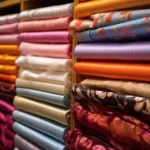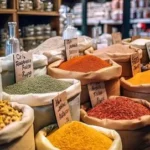Global Cosmetic Chemicals Market
Cosmetic Chemicals are a collection of different chemical substances drawn from artificial and natural sources. They include emulsifiers, rheology, emollients, colorants, and control and thickening agents, which help make cosmetic goods in various forms, such as lotions, gels, pastes, tablets, and aerosols. These items have moisturizing and cleansing capabilities, which makes them popular ingredients in cosmetics, oral care, and other hair and skincare products for improving physical appearance, conditioning, washing, nourishing, and reducing body odor.
Recession Impact
According to our latest report, the global market for Cosmetic Chemicals is expected to be significantly impacted by the recession in the future years. The majority of 2022 was marred by forecasts of a potential recession, which will now almost certainly happen in 2023. The CEBR predicts that a global recession will occur in 2023 due to various economies collapsing due to rising borrowing costs to fight inflation. Additionally, the global economy reached USD 100 trillion for the first time in 2022. Still, it will end in 2023 as policymakers combat rising prices, according to the British consultancy’s annual World Economic League Table.
Market Dynamics
One of the key variables affecting the Cosmetic Chemicals Market is the rising demand from ethnic groups for cosmetics that cater to their demands. The need for Cosmetic Chemicals is also anticipated to rise as the baby boomer generation ages and becomes more conscious of and interested in personal care goods. Additionally, the market for Cosmetic Chemicals is expected to present several exciting opportunities due to the exploding demand for cutting-edge cosmetic products and rising consumer spending on name-brand organic toiletries. The desire to improve one’s look and increase disposable money in developing nations like China and India are the main drivers of the global market for Cosmetic Chemicals. The fashion and entertainment industries are rapidly growing in developed and developing countries, including the U.S., France, and South Korea. Due to the rise in consumer demand for cosmetics, there will soon be a greater need for Cosmetic Chemicals. Furthermore, it is projected that the expanding percentage of working women in major businesses and international firms and their high consumption of beauty products will increase the demand for Cosmetic Chemicals during the forecasted period.
Regional Analysis
North America region dominates the Global Cosmetic Chemicals Market. Due to their application in producing organic personal care products, Cosmetic Chemicals are in high demand. The key elements driving the region’s market for Cosmetic Chemicals have been rising R&D expenditures by manufacturers and related technological innovations in ingredient processing and cost-effective production of organic personal care products. The trend is anticipated to continue over the forecast period. On the other hand, the second-largest market for Global Cosmetic Chemicals is in the Asia Pacific. Some of the key factors driving the growth of the Asia Pacific market for cosmetics and personal care products include rising demand for premium cosmetics, rising awareness of personal care and beauty, particularly among millennial consumers, rising disposable income levels among consumers in the region, rising use of plant-based products, and expanding accessibility to cosmetics and personal care items on e-commerce channels.
Key Companies
The Global Cosmetic Chemicals Market is dominated by globally established players such as Solvay S.A. (Belgium), Cargill Incorporated (US), The Dow Chemical Company (US), Croda International PLC (UK), BASF SE (Germany), P&G (US), Evonik Industries AG (Germany), Stepan Company (US), Symrise (Germany) and others.
![[Market Research Reports] – Research Google News Blog | VMR.Biz](https://www.vmr.biz/wp-content/uploads/2022/12/logo-removebg-preview.png)










